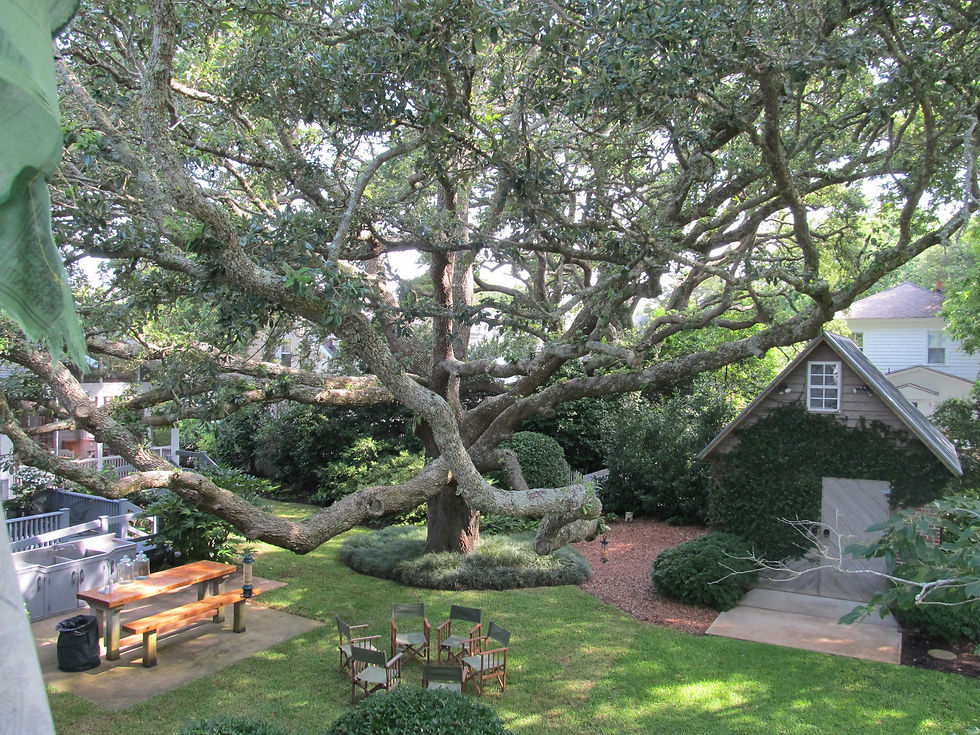
We own a 250-year old heritage Live Oak tree. I should say the tree owns us.
When we purchased our home in the quaint, coastal town of Beaufort, NC, we were charmed by the old house, but dazzled by the giant tree behind the house. We stood and stared, wordlessly, at its majesty. When people asked my husband about our purchase, he responded, "I bought a tree."

A heritage tree is typically a large, individual tree with unique value, which is considered irreplaceable. The major criteria for heritage tree designation include age, rarity, and size, as well as aesthetic, botanical, ecological, and historical value.
Our tree is made more beautiful and its canopy extended by a sister tree in the next door neighbor's garden. Last year I read the book, The Hidden Life of Trees, by Peter Wohlleben, who managed a forest in the Eifel Mountains of Germany over many years. It's a profound book about the science of what trees feel and how they communicate.
I realized that the tree in my garden and the one next door are a symbiotic family that takes care of each other. Their roots are intertwined; as well as their chemistry. If one tree is in trouble due to pests, the other sends out signals to birds inviting them to dine.
You can gain a good synopsis of Wohlleben's book findings at https://www.brainpickings.org/2016/09/26/the-hidden-life-of-trees-peter-wohlleben/
I read that the health of one tree affects both trees. I immediately contacted the owners of the rental property next door and urged them to remove the ivy growing up the trunk. I am certain that my tree whispered, "Thank you for taking care of my sister."
At the Beaufort Historical Association Office, we found an unsigned, handwritten note about the origin of the two trees in a folder for our "plaqued" 1778 house. The note said that the trees sprouted from bean pole stakes planted by a slave. I wondered why it seemed important to the person who left the note to emphasize that a Black American was responsible for these beautiful trees.
Historically, Beaufort had a sizeable population of freed Black Americans who worked in many trades, but were especially skilled watermen. In 1870, the black population of Beaufort, exceeded the white. This was the first census that included all Black Americans by name. I wondered about the man or woman who pushed that oak tree branch into the ground, and the story behind his/her enslavement. I wish it had not been so. When I honor the tree, I also remember and honor the planter for the legacy left behind.
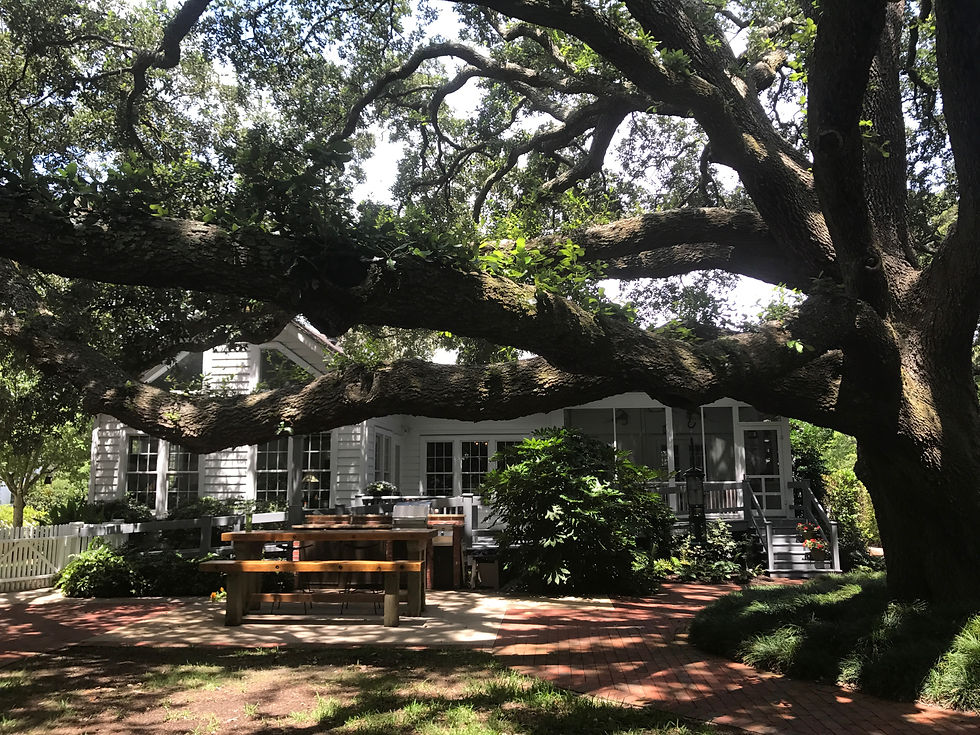
We have some tree huggers in our town today, who plant and water new trees as fast as town employees cut down old ones. The people who deal with water and power lines in Beaufort are no friend of trees. I once visited Beaufort, SC, same name and similar coastal history to our town. One big difference, Beaufort, SC, loves its Live Oaks. Neighborhood streets wind around the old trees and detour the sweeping branches that nearly touch the ground. A magical place for young children to practice their balance, lovers to sit and sip a coffee, and poets to dream.
Only after that visit did I question why we have so few of those heritage trees in my town. Live Oaks thrive in growing conditions common to both locations. They tolerate salty air and strong winds (hurricanes); and like our sandy soil and high water table. They work well as sidewalk trees because they grow from deep tap roots, not spreading roots that tear up walks and streets. Our town should have dozens of these mighty giants as they do in Beaufort, South Carolina.
In the 1700's, our town was laid out in blocks. Each block originally had four plots. I live on Marsh Street in the second half of the first block from the water. The street is so named because it was a wet marshy area accessed only by boat in high tide or a wooden pier in low tide. The original houses on the west side of the block included the Gibble House 1772 and our Rumley House 1778, or its precedent cottage. The east side of our square block, aptly named Live Oak Street was also divided into two lots. One of the original cottages, Owens Bedford House 1730, is one of the few side street houses that still faces the water, pre-dating streets. The other historic home on the east side of the block is the Cabel Bell House 1777.
As children of home owners grew to adults, they chopped down the virgin trees, and chopped up the lots. Over time, five houses were built on our quarter of the block where one originally stood.
Our Live Oak and its sister tree probably sprouted after the first three homes on our quarter of the block were built, in mid to late 1700's. And somehow, out of humor, or neglect, the two trees were left to breathe and grow after that harvest of beans. Most of Beaufort's Live Oaks were cut down to build ships or make way for town growth, which has a limited footprint bound by water on three sides. Currently there are twenty-three houses on our square block.

Much of our lives now involve this tree. Celebrations with friends and family take place in its shade. It is a hotel for birds and squirrels. Every afternoon, a spectacular, painted bunting comes to feed. Some winters, an owl takes residence. Artists paint it; marriages are blessed beneath its heavenly sprawl. The soft morning sunlight and the full moon are made more beautiful through its lacy leaves.


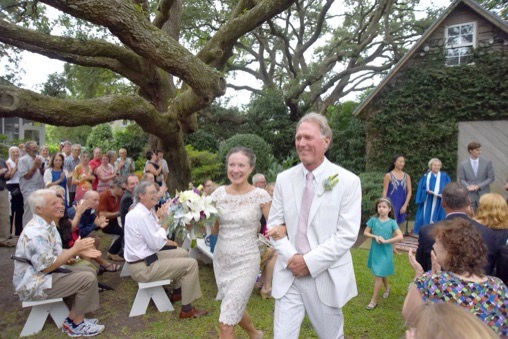

A Live Oak is an evergreen. It drops all its leaves in the spring and quickly leafs out again. The leaves fall from the first week of March through mid-April. So now I am faced with payback time.
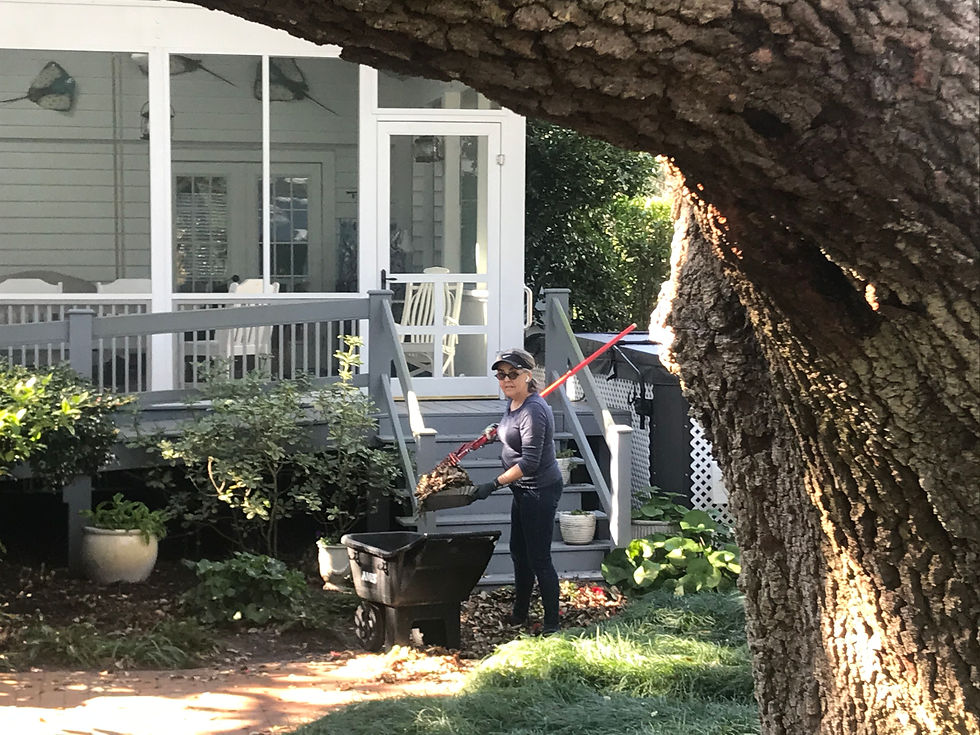
The concept of "payback time" refers to the amount of time it takes to recover the cost of an investment. For six weeks, I rake and rake and rake. I like to count the wheelbarrows and blisters, 42-46 for me, while Charles rakes equal amounts. We pile the leaves beside the barn.
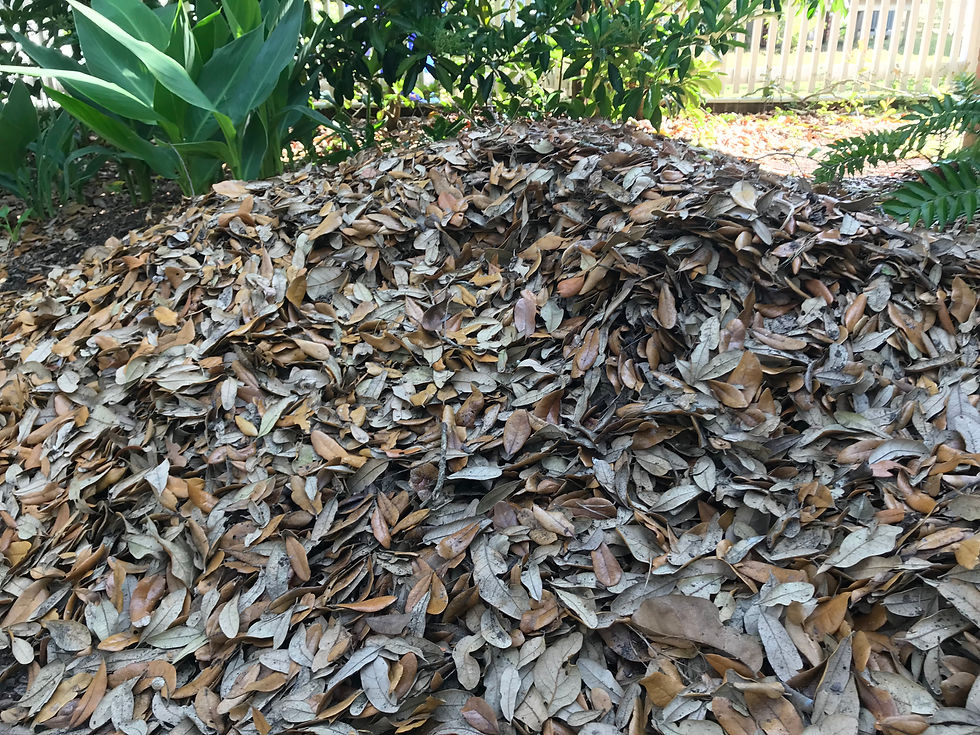
Our tree can look down on an old year shed away, and hope for another yet to come. Charles grinds the pile of leaves and then spreads them as mulch on our natural woodland beds, where ferns, acacia and leopard plants flourish in the deep shade. The tree can witness our service.
As I rake, I think about the things in life that give us blessings, things that we take for granted. The old tree reminds me that we should give something back to all things that give freely to us. In giving, shall we also receive.
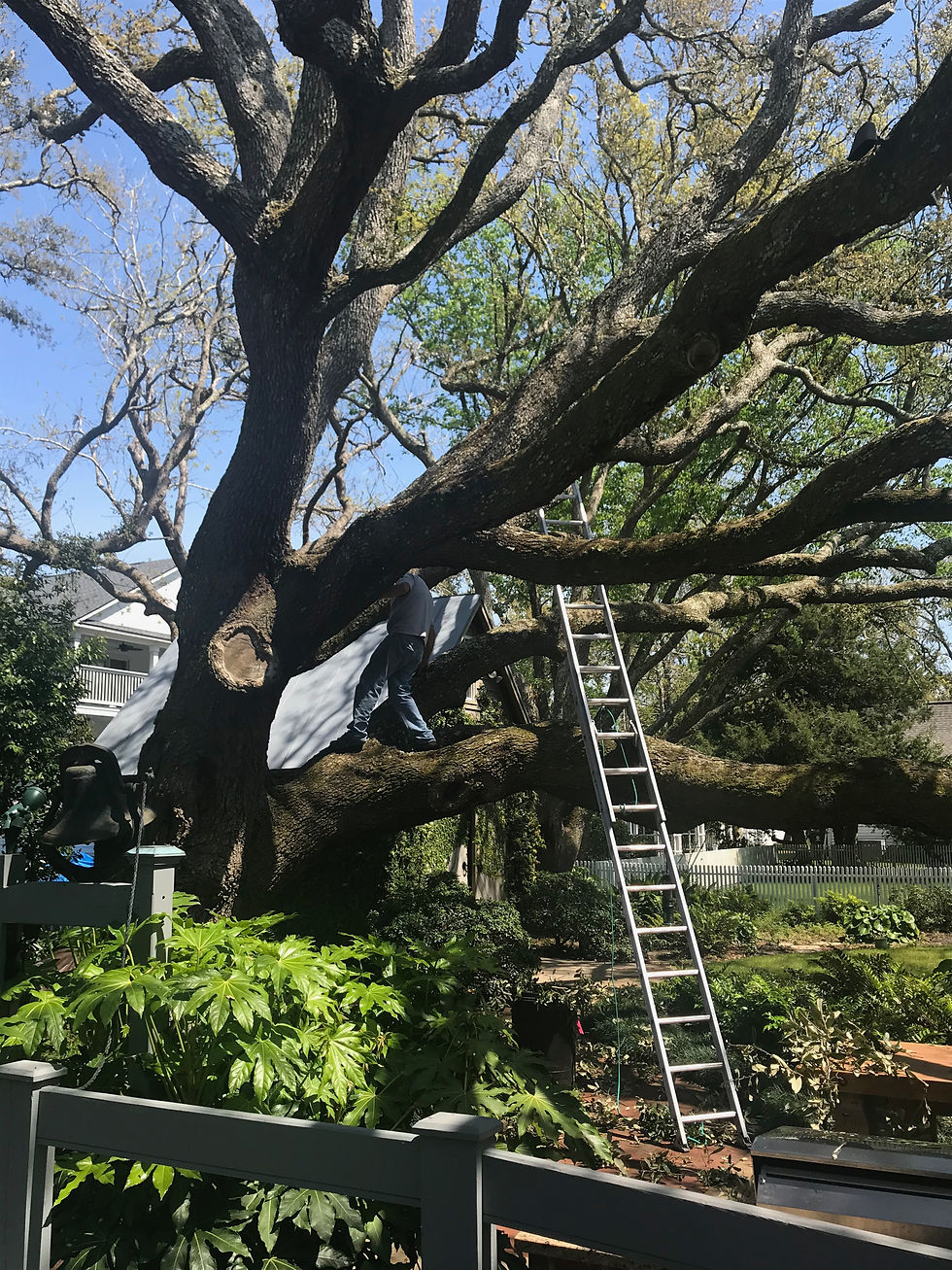
With this blog, I urge readers to consider the things in their lives that could use a little payback. Perhaps it is a person, a responsive local government, or a natural landscape.
Along with that, consider planting a tree on Arbor day, the last Friday of April, in memory of someone you loved or in honor of a newborn child. What a joyous gift for a young child to grow with his/her tree; and to learn payback time, by your example.
Good reasons for planting an oak are abundant in this article: Https://www.nytimes.com/2021/03/31/realestate/oak-trees-why-you-should-plant.html?referringSource=articleShare
Share your "payback time" stories at writeme@deborah-llewellyn.com


Payback Time is a great read. Love the education about your majestic tree. You hosted the Lady's night out pre-pandemic and I had the pleasure to spend some time in your beautiful garden, sitting under the tree. It sure is a magical place.
Great read Deborah.
Looking forward to our annual week in beautiful Beaufort (NC) this summer.